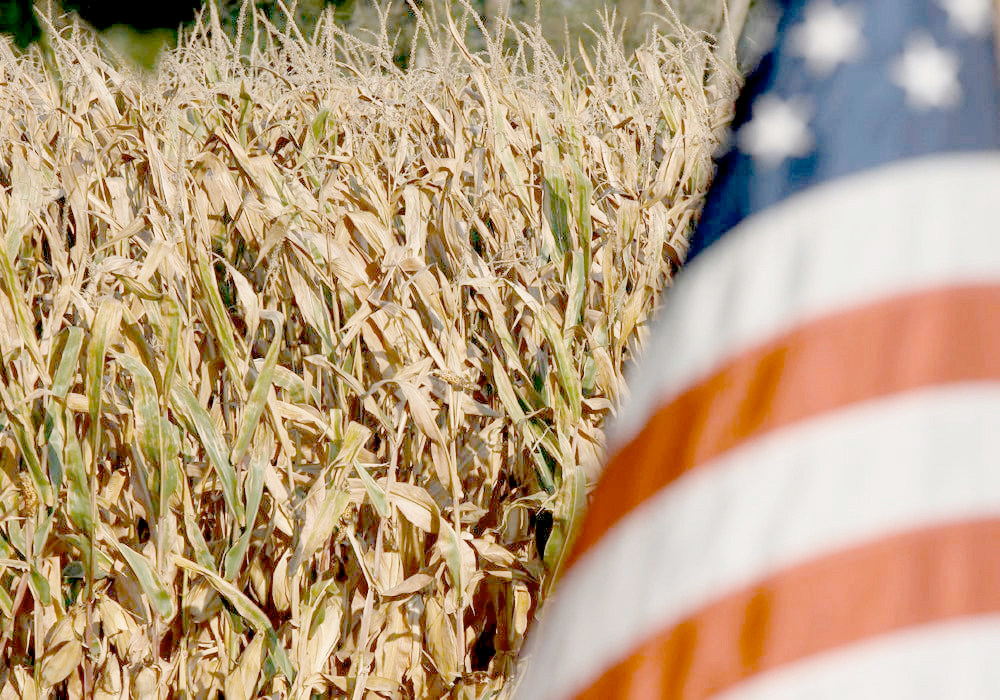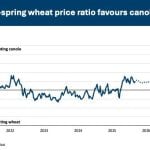A late September, 300-kilometre drive through the sunny centre of northern and central Illinois reveals blue sky, yellowing fields and not one roaring red, green or silver combine gathering in any of the anticipated abundant crops.
“We’re a solid 10 days from corn harvest,” a central Illinois farmer relates in conversation later that day.
“Delayed planting and a wet May put everything back.”
Read Also

Invigor Gold variety viewed as threat to condiment mustard
Invigor Gold, the canola-quality mustard developed by BASF, is on a collision course with Canada’s condiment mustard industry. It’s difficult to see how the two can co-exist.
An early week moisture test on his corn showed “27, 28 per cent, so we’ll wait.”
And for good reason. With local cash corn prices hovering in the US$3.80 per bu. area, few need a hefty grain-drying bill to bite into already pinched profits. Thus, the standing corn sunny mile after sunny mile: it’s old-school drying in the field.
The U.S. Department of Agriculture agrees with the waiting farmers. Its World Agricultural Supply and Demand Estimates for September ratcheted anticipated 2024-25 average corn price down a dime to $4.10 per bu., or about 75 cents per bu. less than 2023’s season average.
For this year’s estimated 15.2 billion bu. crop, the forecasted year-to-year drop means 2024’s crop will generate an estimated $11.4 billion less in gross farm income. That’s a hard hit to the wallet.
The outlook is equally tough for Midwest farmers’ other top crop, soybeans. Central Illinois cash prices hover in the $10 per bu. range, a solid $2 under June prices just three hopeful months ago. That, too, will cut into 2024-25 gross income.
According to the USDA’s September price forecast, farmers can anticipate an average price of $10.80 per bu. this coming year, or $1.70 per bu. less than the 2023-24 soybean crop. If that estimate holds — and nothing on the horizon suggests it won’t — collective gross receipts for American soybean growers will drop by $7.5 billion this year over last.
None of these headed-south prices, however, will bring lower food prices. In late August, USDA estimated “prices for all food are predicted to increase 2.3 per cent” in 2024 and two per cent in 2025. The biggest increase will be in “food away from home … predicted to increase 4.1 per cent.”
The growing gloom in today’s ag commodity markets — wheat, barley, oats, and cotton farmers all face increased production costs and decreased prices — has caught the attention of a long-distracted Congress.
Two Republican senators recently said they are interested in adding a request for some level of “ad-hoc relief” to must-pass legislation this fall.
In early September, the USDA stoked the move by noting 2024 net income is expected to again drop, this time from $146.5 billion in 2023 to $140 billion this year. That modest 4.4 per cent drop, however, comes on the heels of 19.5 per cent plunge in 2023.
Moreover, the University of Missouri’s Food and Agricultural Policy Research Institute predicts the now two-year tumble will carry into 2025 when, it noted in mid-September, net farm income will drop to $129 billion “before a modest recovery in 2026.”
Today’s falling grain prices, falling net farm income and falling farm spirit, however, have combined to reignite Congress’s waning interest in completing the long-delayed farm bill.
Although disagreements over proposed House of Representatives cuts to food aid, the USDA’s green energy programs and current conservation spending all remain unresolved, the current push centres on raising “reference prices,” the mechanism that triggers crop insurance subsidies, which are the bill’s main income support element.
Private reports suggest that Republicans hope to raise the reference prices “15 per cent plus … while (Debbie) Stabenow,” the Democratic Senate agriculture committee boss, “suggests five percent.”
This points to a likely split-the-difference, 10 per cent deal, right?
Sure, but what’s likely in any harvest season is most unlikely in any election season.
Alan Guebert is an agricultural commentator from Illinois.















